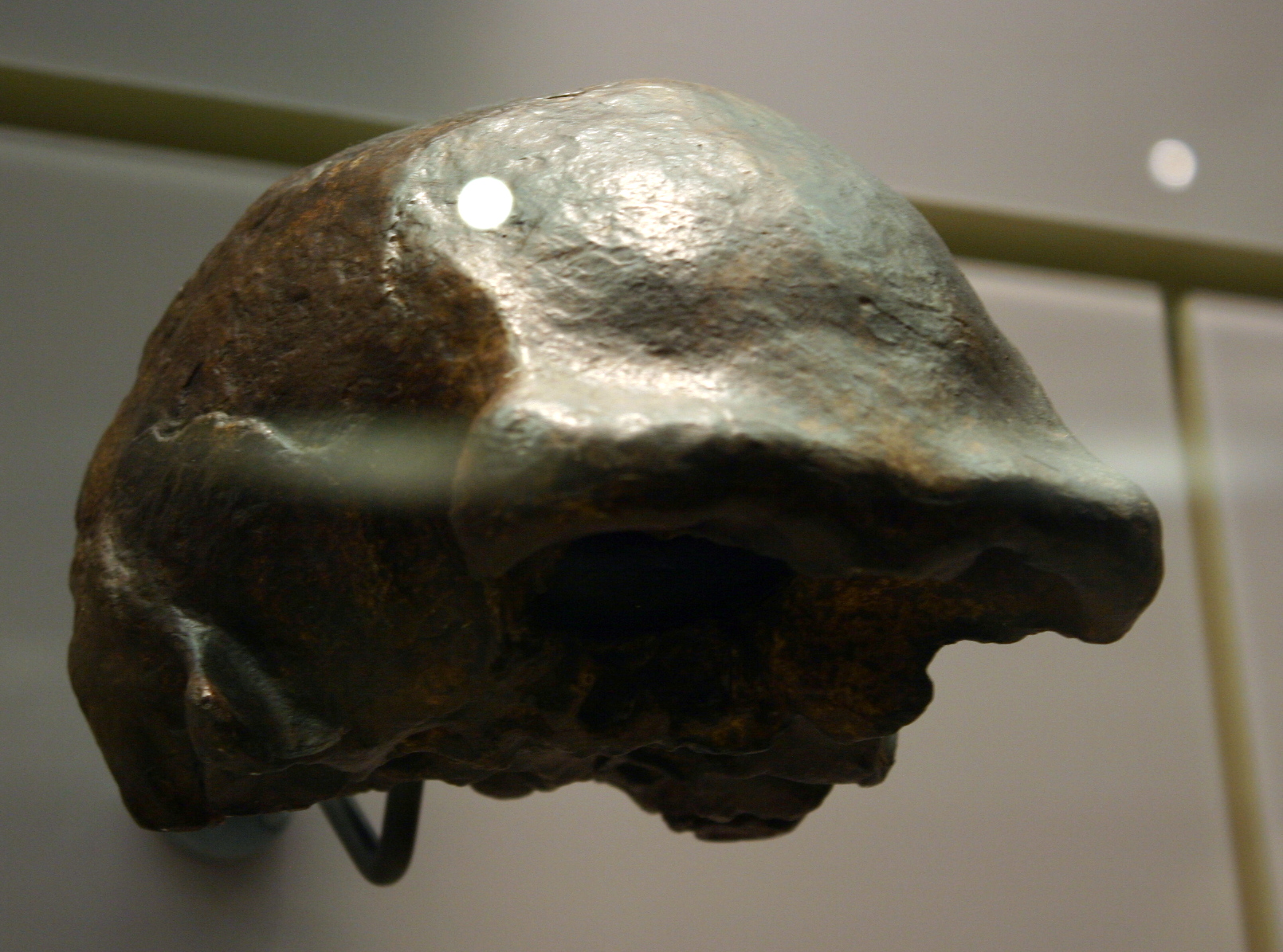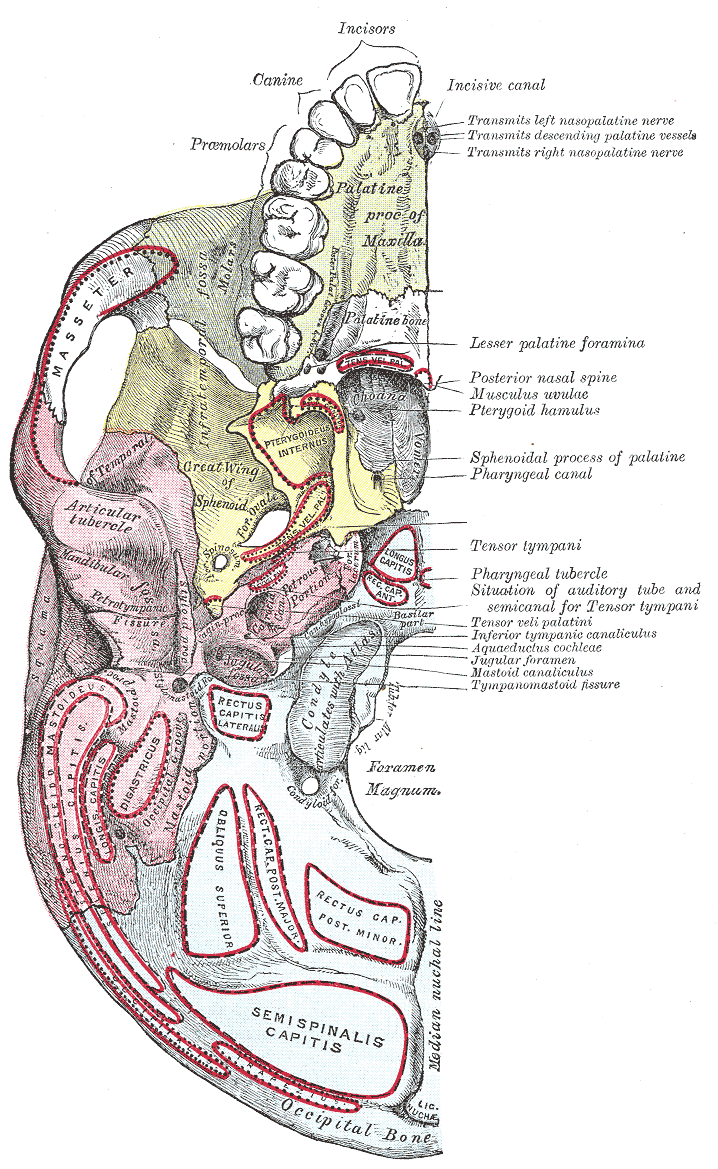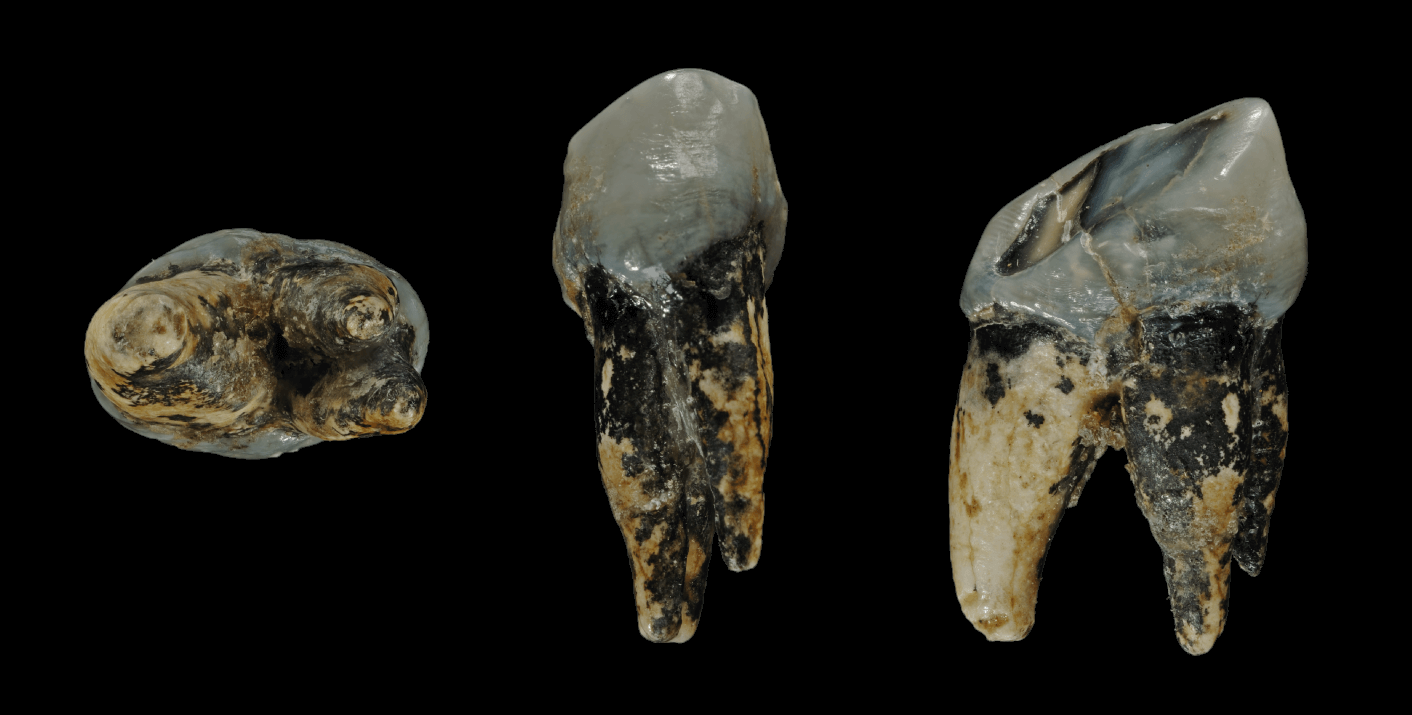|
Sambungmacan Crania
The hominin remains discovered at Sambungmacan are a series of four archaic human fossils assigned to ''Homo erectus'' and discovered in Java. The first is the calvarium is Sm 1, the second is a tibial fragment Sm 2, and the third and fourth are calvaria Sm 3 and Sm 4. Laitman and Tattersall (2001) suggested naming Sm 3, the second calvarium in the series, ''Homo erectus newyorkensis'', but later sources do not agree with this taxonomic scheme. History Sm 1 was discovered by local workers in 1973 during the construction of a canal to control flooding from the nearby Solo River. Sm 2 was discovered on the 21st of September, 1977 at a shortcut canal site alongside other faunal remains at an unknown exact position. It is thought that this fossil is younger than the others. Sm 3 was discovered near the village of Poloyo, although other records state that it was discovered near Ngadirejo, which is located between the villages of Poloyo and Chemeng. Several written records state ... [...More Info...] [...Related Items...] OR: [Wikipedia] [Google] [Baidu] |
Homo Erectus
''Homo erectus'' ( ) is an extinction, extinct species of Homo, archaic human from the Pleistocene, spanning nearly 2 million years. It is the first human species to evolve a humanlike body plan and human gait, gait, to early expansions of hominins out of Africa, leave Africa and colonize Asia and Europe, and to Control of fire by early humans, wield fire. ''H. erectus'' is the ancestor of later human species, including ''Homo heidelbergensis, H. heidelbergensis'' — the last common ancestor of human, modern humans, Neanderthals, and Denisovans. As such a widely distributed species both geographically and temporally, ''H. erectus'' anatomy varies considerably. Subspecies are sometimes recognized: ''Java Man, H. e. erectus'', ''Peking Man, H. e. pekinensis'', ''Solo Man, H. e. soloensis'', ''Homo ergaster, H. e. ergaster'', ''Dmanisi hominins, H. e. georgicus'', and ''Tautavel Man, H. e. tautavelensis''. The species was first species description, described by Eugène Dubois i ... [...More Info...] [...Related Items...] OR: [Wikipedia] [Google] [Baidu] |
Base Of Skull
The base of skull, also known as the cranial base or the cranial floor, is the most Anatomical terms of location#Superior and inferior, inferior area of the human skull, skull. It is composed of the endocranium and the lower parts of the Calvaria (skull), calvaria. Structure Structures found at the base of the skull are for example: Bones There are five bones that make up the base of the skull: *Ethmoid bone *Sphenoid bone *Occipital bone *Frontal bone *Temporal bone Sinuses *Occipital sinus *Superior sagittal sinus *Superior petrosal sinus Foramina of the skull *Foramen cecum (frontal bone), Foramen cecum *Optic foramen *Foramen lacerum *Foramen rotundum *Foramen magnum *Foramen ovale (skull), Foramen ovale *Jugular foramen *Internal auditory meatus *Mastoid foramen *Sphenoidal emissary foramen *Foramen spinosum Sutures *Frontoethmoidal suture *Sphenofrontal suture *Sphenopetrosal suture *Sphenoethmoidal suture *Petrosquamous suture *Sphenosquamosal suture Other *Sph ... [...More Info...] [...Related Items...] OR: [Wikipedia] [Google] [Baidu] |
Ngandong 14
Solo Man (''Homo erectus soloensis'') is a subspecies of ''Homo erectus, H. erectus'' that lived along the Solo River in Java, Indonesia, about 117,000 to 108,000 years ago in the Late Pleistocene. This population is the last known record of the species. It is known from 14 skullcaps, two tibiae, and a piece of the pelvis excavated near the village of Ngandong, and possibly three skulls from Sambungmacan crania, Sambungmacan and a skull from Ngawi depending on classification. The Ngandong site was first excavated from 1931 to 1933 under the direction of Willem Frederik Florus Oppenoorth, Carel ter Haar, and Gustav Heinrich Ralph von Koenigswald, but further study was set back by the Great Depression, World War II and the Indonesian War of Independence. In accordance with historical race concepts, Indonesian ''H. erectus'' subspecies were originally classified as the direct ancestors of Aboriginal Australians, but Solo Man is now thought to have no living descendants because ... [...More Info...] [...Related Items...] OR: [Wikipedia] [Google] [Baidu] |
Sangiran
Sangiran is an archaeological excavation site in Java in Indonesia. According to a UNESCO report (1995) "Sangiran is recognized by scientists to be one of the most important sites in the world for studying fossil man, ranking alongside Zhoukoudian (China), Willandra Lakes (Australia), Olduvai Gorge (Tanzania), and Sterkfontein (South Africa), and more fruitful in finds than any of these." The area comprises about 56 km2 (7 km x 8 km). It is located in Central Java, about 15 kilometers north of Surakarta in the Solo River valley. Administratively, Sangiran area is divided between 2 regencies: Sragen (districts of Gemolong, Kalijambe, and Plupuh) and Karanganyar (district of Gondangrejo). An important feature of the site is the geology of the area. Originally a dome was created millions of years ago through tectonic uplifts. The dome was then eroded exposing beds within the dome which are rich in archeological records. History * 1883: The Dutch paleoan ... [...More Info...] [...Related Items...] OR: [Wikipedia] [Google] [Baidu] |
Geologic Time Scale
The geologic time scale or geological time scale (GTS) is a representation of time based on the rock record of Earth. It is a system of chronological dating that uses chronostratigraphy (the process of relating strata to time) and geochronology (a scientific branch of geology that aims to determine the age of rocks). It is used primarily by Earth scientists (including geologists, paleontologists, geophysicists, geochemists, and paleoclimatologists) to describe the timing and relationships of events in geologic history. The time scale has been developed through the study of rock layers and the observation of their relationships and identifying features such as lithologies, paleomagnetic properties, and fossils. The definition of standardised international units of geological time is the responsibility of the International Commission on Stratigraphy (ICS), a constituent body of the International Union of Geological Sciences (IUGS), whose primary objective is to preci ... [...More Info...] [...Related Items...] OR: [Wikipedia] [Google] [Baidu] |
Parietal Bone
The parietal bones ( ) are two bones in the skull which, when joined at a fibrous joint known as a cranial suture, form the sides and roof of the neurocranium. In humans, each bone is roughly quadrilateral in form, and has two surfaces, four borders, and four angles. It is named from the Latin ''paries'' (''-ietis''), wall. Surfaces External The external surface [Fig. 1] is convex, smooth, and marked near the center by an eminence, the parietal eminence (''tuber parietale''), which indicates the point where ossification commenced. Crossing the middle of the bone in an arched direction are two curved lines, the superior and inferior temporal lines; the former gives attachment to the temporal fascia, and the latter indicates the upper limit of the muscular origin of the temporal muscle. Above these lines the bone is covered by a tough layer of fibrous tissue – the epicranial aponeurosis; below them it forms part of the temporal fossa, and affords attachment to the temporal mu ... [...More Info...] [...Related Items...] OR: [Wikipedia] [Google] [Baidu] |
Frontal Bone
In the human skull, the frontal bone or sincipital bone is an unpaired bone which consists of two portions.'' Gray's Anatomy'' (1918) These are the vertically oriented squamous part, and the horizontally oriented orbital part, making up the bony part of the forehead, part of the bony orbital cavity holding the eye, and part of the bony part of the nose respectively. The name comes from the Latin word ''frons'' (meaning "forehead"). Structure The frontal bone is made up of two main parts. These are the squamous part, and the orbital part. The squamous part marks the vertical, flat, and also the biggest part, and the main region of the forehead. The orbital part is the horizontal and second biggest region of the frontal bone. It enters into the formation of the roofs of the orbital and nasal cavities. Sometimes a third part is included as the nasal part of the frontal bone, and sometimes this is included with the squamous part. The nasal part is between the brow ridges, ... [...More Info...] [...Related Items...] OR: [Wikipedia] [Google] [Baidu] |
List Of Human Evolution Fossils
The following tables give an overview of notable finds of Hominini, hominin fossils and Skeleton, remains relating to human evolution, beginning with the formation of the tribe Hominini (the divergence of the Chimpanzee–human last common ancestor, human and chimpanzee lineages) in the late Miocene, roughly 7 to 8 million years ago. As there are thousands of fossils, mostly fragmentary, often consisting of single bones or isolated teeth with complete skulls and skeletons rare, this overview is not complete, but shows some of the most important findings. The fossils are arranged by approximate age as determined by radiometric dating and/or incremental dating and the species name represents current consensus; if there is no clear scientific consensus the other possible classifications are indicated. The early fossils shown are not considered ancestors to ''Homo sapiens'' but are closely related to ancestors and are therefore important to the study of the lineage. After 1.5 million ... [...More Info...] [...Related Items...] OR: [Wikipedia] [Google] [Baidu] |
Morphology (biology)
Morphology (from Ancient Greek μορφή (morphḗ) "form", and λόγος (lógos) "word, study, research") is the study of the form and structure of organisms and their specific structural features. This includes aspects of the outward appearance (shape, structure, color, pattern, size), as well as the form and structure of internal parts like bones and organs, i.e., anatomy. This is in contrast to physiology, which deals primarily with function. Morphology is a branch of life science dealing with the study of the overall structure of an organism or taxon and its component parts. History The etymology of the word "morphology" is from the Ancient Greek (), meaning "form", and (), meaning "word, study, research". While the concept of form in biology, opposed to function, dates back to Aristotle (see Aristotle's biology), the field of morphology was developed by Johann Wolfgang von Goethe (1790) and independently by the German anatomist and physiologist Karl Fried ... [...More Info...] [...Related Items...] OR: [Wikipedia] [Google] [Baidu] |
Solo Man
Solo Man (''Homo erectus soloensis'') is a subspecies of '' H. erectus'' that lived along the Solo River in Java, Indonesia, about 117,000 to 108,000 years ago in the Late Pleistocene. This population is the last known record of the species. It is known from 14 skullcaps, two tibiae, and a piece of the pelvis excavated near the village of Ngandong, and possibly three skulls from Sambungmacan and a skull from Ngawi depending on classification. The Ngandong site was first excavated from 1931 to 1933 under the direction of Willem Frederik Florus Oppenoorth, Carel ter Haar, and Gustav Heinrich Ralph von Koenigswald, but further study was set back by the Great Depression, World War II and the Indonesian War of Independence. In accordance with historical race concepts, Indonesian ''H. erectus'' subspecies were originally classified as the direct ancestors of Aboriginal Australians, but Solo Man is now thought to have no living descendants because the remains far predate modern ... [...More Info...] [...Related Items...] OR: [Wikipedia] [Google] [Baidu] |
Hominini
The Hominini (hominins) form a Tribe (biology), taxonomic tribe of the subfamily Homininae (hominines). They comprise two extant genera: ''Homo'' (humans) and ''Pan (genus), Pan'' (chimpanzees and bonobos), and in standard usage exclude the genus ''Gorilla (genus), Gorilla'' (gorillas), which is grouped separately within the subfamily Homininae. The term Hominini was originally introduced by Camille Arambourg (1948), who combined the categories of ''Hominina'' and ''Simiina'' pursuant to John Edward Gray, Gray's classifications (1825). Traditionally, chimpanzees, gorillas and orangutans were grouped together, excluding humans, as pongidae, pongids. Since Gray's classifications, evidence accumulating from genetic phylogeny confirmed that humans, chimpanzees, and gorillas are more closely related to each other than to the orangutan. The orangutans were reassigned to the family Hominidae (great apes), which already included humans; and the gorillas were grouped as a separate tr ... [...More Info...] [...Related Items...] OR: [Wikipedia] [Google] [Baidu] |
Gracility
Gracility is slenderness, the condition of being gracile, which means slender. It derives from the Latin adjective ''gracilis'' (Masculine (grammar), masculine or Feminine (grammar), feminine), or ''gracile'' (Grammatical gender, neuter), which in either form means slender, and when transferred for example to discourse takes the sense of "without ornament", "simple" or various similar connotations. In ''Glossary of Botanic Terms'', B. D. Jackson speaks dismissively of an entry in earlier dictionary of A. A. Crozier as follows: "Gracilis (Lat.), slender. Crozier has the needless word 'gracile'". However, his objection would be hard to sustain in current usage; apart from the fact that ''gracile'' is a natural and convenient term, it is hardly a neologism. The ''Shorter Oxford English Dictionary'' gives the source date for that usage as 1623 and indicates the word is misused (through association with ''grace'') for "gracefully slender". This misuse is unfortunate at least, because ... [...More Info...] [...Related Items...] OR: [Wikipedia] [Google] [Baidu] |







